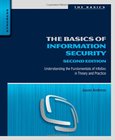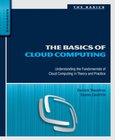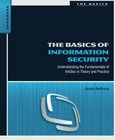The Basics of Cyber Warfare
Understanding the Fundamentals of Cyber Warfare in Theory and Practice

Book Details:
| Publisher: | Syngress |
| Series: | Syngress , Practice |
| Author: | Steve Winterfeld |
| Edition: | 1 |
| ISBN-10: | 0124047378 |
| ISBN-13: | 9780124047372 |
| Pages: | 164 |
| Published: | Dec 31 2012 |
| Posted: | May 26 2017 |
| Language: | English |
| Book format: | |
| Book size: | 6.97 MB |
Book Description:
The Basics of Cyber Warfare provides readers with fundamental knowledge of cyber war in both theoretical and practical aspects. This book explores the principles of cyber warfare, including military and cyber doctrine, social engineering, and offensive and defensive tools, tactics and procedures, including computer network exploitation (CNE), attack (CNA) and defense (CND). Readers learn the basics of how to defend against espionage, hacking, insider threats, state-sponsored attacks, and non-state actors (such as organized criminals and terrorists). Finally, the book looks ahead to emerging aspects of cyber security technology and trends, including cloud computing, mobile devices, biometrics and nanotechnology. The Basics of Cyber Warfare gives readers a concise overview of these threats and outlines the ethics, laws and consequences of cyber warfare. It is a valuable resource for policy makers, CEOs and CIOs, penetration testers, security administrators, and students and instructors in information security. Provides a sound understanding of the tools and tactics used in cyber warfare. Describes both offensive and defensive tactics from an insider's point of view. Presents doctrine and hands-on techniques to understand as cyber warfare evolves with technology.
Download Link:
Related Books:
The Basics of Information Security
Understanding the Fundamentals of InfoSec in Theory and Practice
2nd Edition
As part of the Syngress Basics series, The Basics of Information Security provides you with fundamental knowledge of information security in both theoretical and practical aspects. Author Jason Andress gives you the basic knowledge needed to understand the key concepts of confidentiality, integrity, and availability, and then dives into practical applications of these ideas in the areas of operational, physical, network, application, and operating system security. The Basics of Information Security gives you clear-non-technical explanations of how infosec works and how to apply these principles whether you're in the IT field or want to understand how i...
The Basics of Cloud Computing
Understanding the Fundamentals of Cloud Computing in Theory and Practice
As part of the Syngress Basics series, The Basics of Cloud Computing provides readers with an overview of the cloud and how to implement cloud computing in their organizations. Cloud computing continues to grow in popularity, and while many people hear the term and use it in conversation, many are confused by it or unaware of what it really means. This book helps readers understand what the cloud is and how to work with it, even if it isn't a part of their day-to-day responsibility. Authors Derrick Rountree and Ileana Castrilloexplains the concepts of cloud computing in practical terms, helping readers understand how to leverage cloud services and provide value to their businesses through moving information to the cloud. The book will be presented a...
The Basics of Information Security
Understanding the Fundamentals of InfoSec in Theory and Practice
The Basics of Information Security provides fundamental knowledge of information security in both theoretical and practical aspects. This book is packed with key concepts of information security, such as confidentiality, integrity, and availability, as well as tips and additional resources for further advanced study. It also includes practical applications in the areas of operations, physical, network, operating system, and application security. Complete with exercises at the end of each chapter, this book is well-suited for classroom or instructional use. The book consists of 10 chapters covering such topics as identification and authentication; authorization and access control; auditing and accountability; cryptography; operations security; physica...
2007 - 2021 © eBooks-IT.org



